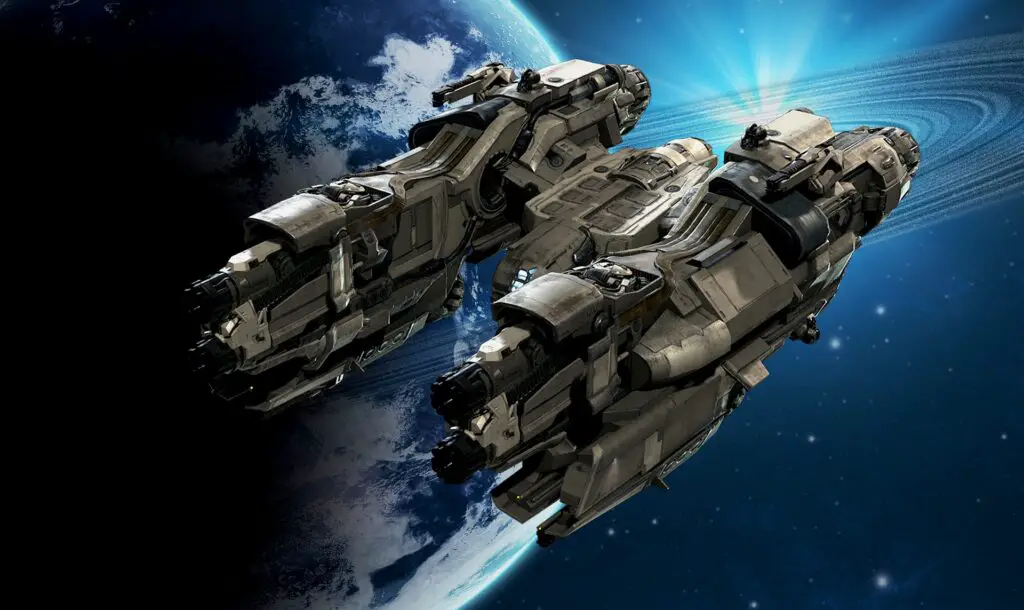In the next 78 years to come, the world will embrace the 22nd century. At this point, the world of space exploration will surely take a different level. Several future technologies will revolutionize the way humanity will explore the stars. But what technologies can we invent at this point? You are about to find out how future technologies will take our space program to the next level in the 22nd century. Stay tuned.
Future Technologies that will Revolutionize Space Exploration in the 22nd Century
Technological advancement will significantly change the way we explore space and reach distant space worlds in the 22nd century. But how can we reach such a milestone when we are still struggling to travel beyond low earth orbit after the last man left the lunar surface in 1972?
Well, Scientists often analyze our next technological advancement based on the effort made so far in preparing for the future. With the sophisticated technologies we have in recent times, we should be advanced enough to confidently invent and improve the following future technologies to advance space exploration in the 22nd century.
1. Artificial Super Intelligence.

Artificial superintelligence (ASI) will be invented as a software-based program with sophisticated intellectual abilities that will supersede human intelligence in almost every field and industry. Many big tech gurus like Elon Musk are already warning the world leaders about the implications of these sophisticated ASIs. Many scientists have speculated that humanity’s last invention will happen in this century.
This is because Artificial super intelligence will possess extra abilities to invent more advanced and reliable technologies in the future. This technological advancement will improve every sector including the Space industry. This implies that we should be expecting more sophisticated and advanced space technologies to confidently visit and live in the hostile environment of Mars and beyond.
But can we possibly invent ASI before the 22nd century? Scientists revealed that Artificial intelligence development is improving at an exponential rate. To put that into perspective, studies have proven that Artificial intelligence improvement doubles every 18 months. Currently, we have weak Artificial Intelligence. But many futurists believe that they all surely grow to become Artificial super intelligence before the end of this century. If this eventually happens, humans may be living in low earth orbit space habits, moon, Mars, and beyond by the 22nd century.
2. Artificial Gravity.

One of the major challenges facing our astronauts in space is the impact of the weightless environment of space on their bodies. When astronaut Peggy Whitson returned from space in 2017, she could barely walk because of the impact of her long-term stay in space on her bone mass. However, scientists are working towards providing artificial gravity to astronauts in space.
Since the idea of artificial gravity was first published by Konstantin Tsiolkovsky, a Russian and Soviet rocket scientist and pioneer of cosmonautics in 1903, the scientific community has been fascinated by the concept. In the publication, Tsiolkovsky described how we can use rotation to generate artificial gravity in the weightless environment of space.
Von Braun later propose the idea of building a space station with artificial gravity in 1928. Despite the fascinating concepts of artificial gravity published in the 20th century, we are yet to bring the idea to life. Orbital Assembly Corporation, an American company is currently working towards designing and operating the first space hotel with artificial gravity before the end of this decade.
If all goes as planned, this space hotel is expected to be up and running by 2027. If Orbital Assembly attains such a milestone, then we should be able to implement artificial gravity in spaceships by 2100. This implies that astronauts traveling to the moon, Mars, and beyond, will no longer feel the impact of the weightless environment of space on their bodies.
3. 3D Printing.

3D Printing technology will play a great role in space exploration in the future. The concept of 3D printing involves building three-dimensional solid objects directly from a digital file. NASA and other space agencies are already taking advantage of 3D printing technology to prepare for the future.
Relativity Space, an American Aerospace Manufacturing company is already building the first 3D rocket which they may launch to space anytime soon. If we can attempt to build rockets with 3D printing based on our current technological advancement, imagine what we will be doing with the technology in the next century. As space agencies plan to build orbital outposts and possibly colonize the Moon, Mars, and beyond, 3D printing technology will be used to fasten the working process. Before the 22nd century, humanity must have mastered how to use 3D printers on Earth and in other space worlds.
4. More efficient Propulsion Systems.

Our ability to reach distanced space worlds highly depends on the efficiency of our propulsion systems. Currently, we still rely on chemical propulsion systems to reach space. However chemical propulsion rockets have several setbacks that will delay our trips to Mars and beyond. If we must cover greater distances within a short period, we must think of using more sophisticated and advanced propulsion systems.
Many space agencies are already working towards developing better propulsion systems for future space exploration. Ad Astra Rocket Company based in Texas is already working on the Variable Specific Impulse Magnetoplasma Rocket (VASIMR), which is regarded as the most powerful plasma rocket humans have ever developed. The company is confident that its rocket can be sophisticated enough to get a spacecraft to Mars in 39 days.
The world is still waiting to see the future of this most sophisticated rocket. NASA is researching many propulsion systems to reduce the duration of space missions. The American space agency is mostly looking at Nuclear Electric Propulsion systems. NASA has even designed the NEXT engine, which is a unique type of electric propulsion that allows thruster systems to use electricity to move the xenon propellant up to 90,000 mph. In the 22nd century, future scientists will carefully choose the best propulsion systems to build next-generation spaceships that will enable humanity to explore the stars.
5. Space Elevator.

The idea of a space elevator was first coined by the Russian Scientist Konstantin Tsiolkovsky in 1895. The renowned rocket scientist derived his inspiration from the Eiffel Tower in Paris and assumed a similar tower could be built from the ground to reach an altitude of 35,786 kilometers. Building a tower that can reach this milestone simply means we have reached the height of geostationary orbit.
But are we close to bringing this idea to a reality? At the rate we are currently progressing, we may not necessarily have to wait for future generations in the 22nd century to build the first space elevator. In fact, Obayashi Corporation, a Japanese construction company announced in 2012, that its plans to construct a Space Elevator by 2050.
The company plans to put the space elevator with two tethers. One of the tethers will be used to send cargo and humans into space, while the other is to complete the return trip from space. Obayashi believed that the Space Elevator will be sophisticated enough to carry up to 30 astronauts and cargo on a single trip to space. In the 22nd century, humanity will become more advanced to make more space elevators which may eliminate the need for rockets to reach low earth orbits.
6. Spinning Objects to Space.

Have you ever imagined spinning objects into space directly from earth? If you are seeing this for the first time, you may doubt the possibility of humans replicating the idea in the near future. However, SpinLaunch, a California-based company was established in 2014 to bring this idea into a reality. The primary goal of Spinlaunch is to use special kinetic launch systems to transport satellites into low Earth orbit.
Keep in mind that the launch of satellites into space has continued to rise in recent times. Spinlaunch hopes to use its futuristic technology to lower the cost of satellite launch with lesser environmental impacts than rockets. In the 22nd century, this idea will be redesigned to meet the future meets of launching more sophisticated satellites into low earth orbit.
7. Space Hotels and Habitats.

Orbital Assembly Corporation is working towards opening the first space hotel in low earth orbit around 2027. This is great news, especially for space lovers who have been waiting to travel to space for a vacation, and holidays. In the 22nd century, we should be expecting many government-owned and privately owned space hotels and habitats opened to anyone who wishes to visit space.
But will people have to break their banks to afford to visit these space habitats? The cost of visiting these space habitats will reduce drastically with time. In fact, average income earners may likely afford the trip to space hotels in the 22nd century.
8. Sophisticated spacesuits.

In less than a century of commencing with space exploration, we have significantly improved spacesuit designs. As space agencies are preparing for crewed missions to Mars, we should be expecting more advanced spacesuits to meet the demand of the mission. Before the end of the 21st century, humanity must have made great progress in spacesuit designs. In fact, we should be able to design suits that will give our astronauts extra abilities in space. Astronauts traveling to distant space worlds in the 22nd century will have access to these futuristic spacesuits to stay safe while exploring the stars.
9. Nanotech.

Scientists are aware that we need a more efficient means of exploring new space worlds in the future. This is where nanobots will come in. Many scientists believed that Nanobots will efficiently explore new planets even better than rovers, and landers. When we study a new planet with nanobots, they will give more detailed mapping and obtain faster results from the target planet.
Based on the information we will be getting from these nanobots, humanity will learn more about a new planet of interest and decide on the next mission to launch there. We are still working on improving nanobot technology in the 21st century. However, scientists will surely figure out how to get the best out of nanobots in the 22nd century.
10. Highly protective Colonies.

After the first man landed on the moon in 1969 and returned home safely, the world realize that we can actually send people to distant space worlds. Many space agencies like NASA, CNSA, SpaceX, ESA, and others are hoping to send astronauts to the moon and Mars before 2040. Elon Musk, the founder of SpaceX even anticipated building the first city on Mars and sending 1 million people to live in this city.
While this idea will appear far-fetched to many people, Elon Musk has remained optimistic about making it a reality soon. While other space agencies are pushing their crewed mission to Mars to the next decade, Elon Musk is working on sending humans to Mars by 2029. The tech billionaire has already built sophisticated spaceships which he hopes will get to Mars someday.
If any of these space agencies successfully sent humans to Mars before the end of this century, our next goal will rely on building colonies on the Moon, Mars, and beyond. In the 22nd century, advancements in technology will make it possible to build colonies that will protect astronauts from the radiation and hostile environment of the celestial body.
Conclusion
Humanity has continued to progress technologically at a faster pace. With the milestone attained so far, we all can see that future technologies will surely revolutionize space exploration. What do you think about these future technologies changing the way we explore space in the next century?






When “walking on the moon” was considered too far fetched, we know that these future technologies WILL ARRIVE and CHANGE OUR WORLD FAR BEYOND our current view and imagination!
I hope to see these developments either from this Earth or from new and different vantage points❗️
Half our energy is spent protecting ourselves from each other. A futile exercise that no other animal partakes in. Sort that other worlds are our oysters.